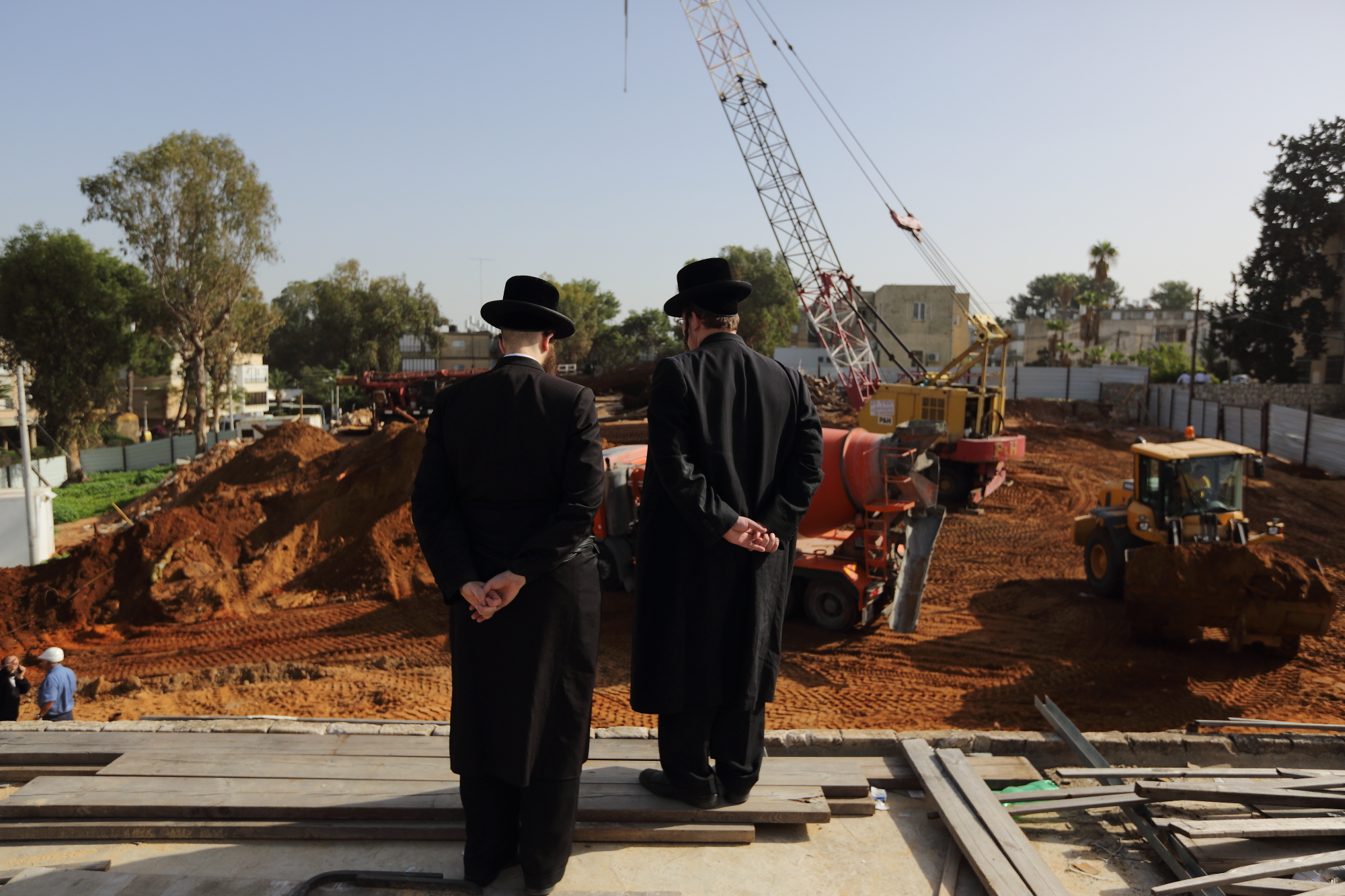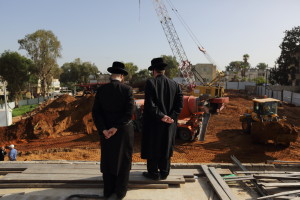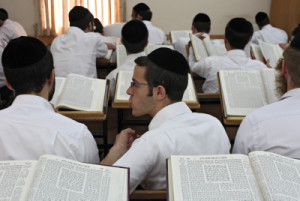The RBSO Resides Where?
When the kids were much younger, and each still attending nursery school for a number of years before they finally graduated to kindergarten (after approximately fifty thousand in tuitions for each child), they would come home singing the song “Hashem is here, Hashem is there, Hashem is truly everywhere. Up up, down, down, right left and all around, here there and everywhere, that’s where He can be found.”….and noch a mol (one more time). Shoin, of course we sang along with them, and the song, forever indelibly engrained in our memory banks, will avada be sung by the next generation of kids who will likely be attending some pre-nursery program just after birth. What a racket! Ober is that where Hashem can be found? Is Hashem mamish everywhere and does He live everyplace? Or, as this week’s parsha of Teruma teaches us, did Hashem or His essence reside in but a very specific space, a defined space that the Yiddin were to build for Him and as very colorfully described? Shoin, we will explore that soon.
One more thought: While it took modern day yeshivas thousands of years to figure out that not every nice Jewish boy is cut out to spend his days and nights huroving (toiling) over the folios of the heylige Gemora, and the heylige Toirah, the RBSO knew this within days and weeks of Matan Toirah (Revelation). Mistama way before. What to do with this bunch of Yiddin, likely the great majority of them? Ober not to worry: The RBSO had a master plan, doesn’t He always? It unfolds this week. He decided that they could be productive members of society by contributing other skills. Because of His specific housing demands, many will take an interest in architecture, carpentry, interior design, space planning and even interior decorating. Mamish ingenious. In later generations, people with these skill sets or inclinations, and others, which include electricians and plumbers, will be making a decent living. Some will be paid mostly in cash. It’s all in this week’s parsha. We will get to both topics shortly, ober ershtens….
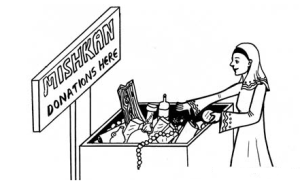 Perhaps because the Yiddin were still in a state of shock after hearing 53 new mitzvis (commandments) in last week’s parsha of Mishpotim and, or, maybe because they were still digesting the 30 thou-shall-not-dos, while working feverishly trying to figure out loopholes around them -especially how to charge interest when giving loans to their fellow brothers in need- this week, the RBSO is back with but one new positive commandment. It’s one giant mitzvas ah-say which avada encompasses many dozens of smaller ones, but still, it’s a relief. Welcome to parshas Teruma which introduces the Yiddin to the first ever system of taxation and begins with efsher the greatest and most famous building campaigns of all time. The Yiddin will be instructed to build for the RBSO a ‘Mikdosh’ (Sanctuary or Tabernacle: readers choice), a place where the RBSO can dwell among His people. Exactly what that means and why the RBSO ordered its construction has been hotly debated for thousands of years. Back then and for that time and place, the Mishkon was a portable sanctuary -think: mobile home- that was assembled and disassembled many times during the 40 year midbar sojourn. Avada this was a time before the invention of wheels and motors; instead the Liviyim (Levites) were assigned to carry it using poles that were placed through rings.
Perhaps because the Yiddin were still in a state of shock after hearing 53 new mitzvis (commandments) in last week’s parsha of Mishpotim and, or, maybe because they were still digesting the 30 thou-shall-not-dos, while working feverishly trying to figure out loopholes around them -especially how to charge interest when giving loans to their fellow brothers in need- this week, the RBSO is back with but one new positive commandment. It’s one giant mitzvas ah-say which avada encompasses many dozens of smaller ones, but still, it’s a relief. Welcome to parshas Teruma which introduces the Yiddin to the first ever system of taxation and begins with efsher the greatest and most famous building campaigns of all time. The Yiddin will be instructed to build for the RBSO a ‘Mikdosh’ (Sanctuary or Tabernacle: readers choice), a place where the RBSO can dwell among His people. Exactly what that means and why the RBSO ordered its construction has been hotly debated for thousands of years. Back then and for that time and place, the Mishkon was a portable sanctuary -think: mobile home- that was assembled and disassembled many times during the 40 year midbar sojourn. Avada this was a time before the invention of wheels and motors; instead the Liviyim (Levites) were assigned to carry it using poles that were placed through rings.
We have previously written about this construction project and parsha (five times); you know where to find the archives. Same place as last week: www.oisvorfer.com. You will mamish enjoy them. Ober, why did the Oisvorfer introduce this building campaign as the most famous of all? Because it’s likely that it was the first and only time in Jewish history that a sanctuary was built without having names of its donors adorn the outside of the building or its lobby. There were no plaques to be found naming the sponsors of the building’s windows, wings, pews, book shelves, library, mizuzas, lobby, classrooms, water cooler, rabbi’s study, and the list goes on. Its name was not auctioned off to the highest bidder. Try that today! Bazman hazeh (in our times), no one would dare plan a religious edifice, let alone build one, without a large donors’ board? In fact, the RBSO’s project didn’t even include a fundraising breakfast to kick start or fund the campaign.
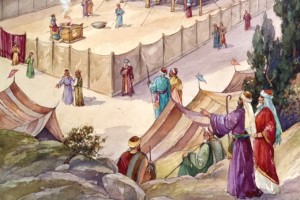 Ober how taka could a religious building be funded and built without those essential fund raising tools? Were the Yiddin motivated enough to contribute without proper recognition? Mamish unheard of! Seemingly the Yiddin, all of them, were involved in the capital campaign. So the heylige Toirah will teach us. And why not? They had wealth and lots of it. How much and where did all this wealth come from? Weren’t they enslaved for 210 years and aren’t we to assume they were underpaid, or not at all paid? Ober let’s recall the RBSO’s promise to Avrohom Ovenu: He did predict that the Yiddin would leave the land they were previously strangers in, with great wealth. Says the heylige Gemora (Birochis 40a) azoy: Each member of the klall Yisroel (each Yid) possessed 80 camels laden with gold, silver, precious gems, and pearls. And if that’s emes and why shouldn’t it be, the RBSO decided to test them and their generosity. Would they be willing to give up a mere mandated half-shekel towards the building of a structure that would house His Shechina (essence, or whatever that means)? Grada, in addition to the mandated half-shekel tax, they came forward with more than abundant amounts of all the other required items which included gold, silver, copper, and blue, purple, and crimson wool, linen and goat hair, ram skins dyed red, tachash skins, and acacia wood, oil for lighting, spices for the anointing oil and for the incense, shoham stones and filling stones for the eyfod and for the choishen – out of the goodness of their hearts. They passed the test! Shoin, we can now chap why they had no time to bake bread or storage space for bread or cookies. Why pack a camel with bread, cake and cookies and use up valuable space on carbs when their camels could instead be laden down with gold and other precious metals? These Yiddin were a very clever bunch.
Ober how taka could a religious building be funded and built without those essential fund raising tools? Were the Yiddin motivated enough to contribute without proper recognition? Mamish unheard of! Seemingly the Yiddin, all of them, were involved in the capital campaign. So the heylige Toirah will teach us. And why not? They had wealth and lots of it. How much and where did all this wealth come from? Weren’t they enslaved for 210 years and aren’t we to assume they were underpaid, or not at all paid? Ober let’s recall the RBSO’s promise to Avrohom Ovenu: He did predict that the Yiddin would leave the land they were previously strangers in, with great wealth. Says the heylige Gemora (Birochis 40a) azoy: Each member of the klall Yisroel (each Yid) possessed 80 camels laden with gold, silver, precious gems, and pearls. And if that’s emes and why shouldn’t it be, the RBSO decided to test them and their generosity. Would they be willing to give up a mere mandated half-shekel towards the building of a structure that would house His Shechina (essence, or whatever that means)? Grada, in addition to the mandated half-shekel tax, they came forward with more than abundant amounts of all the other required items which included gold, silver, copper, and blue, purple, and crimson wool, linen and goat hair, ram skins dyed red, tachash skins, and acacia wood, oil for lighting, spices for the anointing oil and for the incense, shoham stones and filling stones for the eyfod and for the choishen – out of the goodness of their hearts. They passed the test! Shoin, we can now chap why they had no time to bake bread or storage space for bread or cookies. Why pack a camel with bread, cake and cookies and use up valuable space on carbs when their camels could instead be laden down with gold and other precious metals? These Yiddin were a very clever bunch.
It so happens the Yiddin had gold left over which they sadly used to build the eygel (golden calf), ober let’s not chap. That last sentence assumes that the eygel (golden calf) occurred later (two weeks from now in parsha time). On the other hand, a healthy number of medroshim and others suggest that the eygel incident preceded this entire Mishkon project. It did? Maybe! Said Reish Lokish in the heylige Gemora (Migillah 13b) azoy: “The Holy One, Blessed is He, does not inflict the Jewish people, until He has first made their remedy.” In other words: the RBSO knew all along that the Yiddin were not just motivated to give generously, but were also motivated to sin. Over and again; we will avada cover each of their mishaps. So happens that we learn about the Mishkon first (this week) with the eygel caper to follow in two more shabosim. Ober, which came first? Let’s settle the matter once and for all: We don’t know with certainty and let’s go veyter. Ober why would the RBSO teach us about taxes, construction, interior design and architecture this week? Wasn’t the Mishkon project undertaken to atone for the sin of the golden calf? Shoin, it’s poshit (plainly understood): The RBSO in His infinite wisdom wanted the Yiddin to have the antidote to their sin before they actually committed it. Avada He knew about the eygel in advance, He knows everything and every sin man (and woman) will commit. Oy vey! Another medrish will tell us ‘eyn mukdam u’muchar ba’toirah (there is no chronology in the heylige Toirah) and just because we learn of something in this parsha does not at all mean that it took place then. It could be have taken place earlier or later. Then again, other rabbis will teach us that there is an order and that typically what we learn is chronological except when it’s not. Is that clear? Good! In other words: we should always assume that events are indeed recorded chronologically unless those events make no sense to a few rabbis who will then tell us to look at the events out of order. In those cases, we need to assume farkert. Givaldig and settled. Shoin, whether the eygel caper unfolded before the Mishkon instructions or after, is apparently none of your or our business. If the RBSO wanted us to know, zicher He would have told us. Our job is to keep guessing until one day when the Moshiach arrives and clarifies this and many others issues that remain cloudy.
 Shoin let’s get back to the camels. Avada we chap that the camels were laden with gold, silver copper and even gems, ober, didn’t the ‘materials needed list’ for the Mishkon project also include other items? Indeed it did and the entire list also includes these fine items: blue, purple, and crimson wool, linen and goat hair, ram skins dyed red, tachash skins, and acacia wood, oil for lighting, spices for the anointing oil and for the incense, shoham stones and filling stones for the eyfod and for the choishen.
Shoin let’s get back to the camels. Avada we chap that the camels were laden with gold, silver copper and even gems, ober, didn’t the ‘materials needed list’ for the Mishkon project also include other items? Indeed it did and the entire list also includes these fine items: blue, purple, and crimson wool, linen and goat hair, ram skins dyed red, tachash skins, and acacia wood, oil for lighting, spices for the anointing oil and for the incense, shoham stones and filling stones for the eyfod and for the choishen.
Ober if the camels were not carrying these items and if the Yiddin were taka in an otherwise desolate midbar without a Home Depot, Home Goods or Michael’s in sight, where were they going to find wool in different colors, linen and goat hair, oil, spices and assorted other items on the ‘materials needed list’? But not so fast you wisenheimers because you forgot the X factor, the RBSO. Hey, didn’t the RBSO recently split the sea? And didn’t He produce water from a rock, deliver quail and Mun to eat ? And didn’t He, just a few parshas back, bring about at least ten plagues upon the Mitzrim including darkness when the Yiddin supposedly ‘borrowed’ items of value from their Egyptian neighbors? Avada He did all those things. So, what’s the big kasha here? Moreover, if the RBSO ordered a Mishkan to be built and decorated in the desolate and barren midbar, mistama He had a plan. He always does. The Yiddin were ready with cash, gold, silver, copper and assorted other gemstones and other materials. Can it not be the case that the Yiddin either knew to borrow and bring along ticheyles, argomon and toila’as shonee (blue, purple, and crimson wool)? Or, can it not be the case that the Mitzrim, while giving chase, had these items in their chariots? Use your imaginations! Is it not feasible that the RBSO planted these items in the midbar in the first ever version of the ‘treasure hunt’, an activity later copied by many sleep-away camps, and in modern times by TV shows like The Amazing Race? Of course it’s all possible: it’s the RBSO. He does as He pleases!
Shoin, earlier we mentioned that just two parshas back and fifty days after being freed from slavery, the RBSO came down and delivered the Ten Commandments. Last week, He gave us a glimpse into what was yet to come. We received 53 new mitzvois and in the coming weeks and months, we will receive a total of 613 of them. Many of them were quite restrictive, not what the Yiddin had become accustomed to over in Mitzrayim and even before. And ever since, it has been our job -or so our parents told us- to sit and learn, to study, and for some, to make careers out of sitting and studying some more. How long? For most of us, at least through high school, for some, another year or more over in Israel, and for some, seemingly forever. Ober let’s face it: Toirah study is not for everyone! And why do parents and educators force such study on those who show no interest or lack the natural acumen and or inclination to do so? Ver veyst? So long as they collect tuition and feed the wheel, the yeshivas are happy. Ober did the yeshiva system ever make adjustments to accommodate those who lack interest in studying over and again what happens and what the halocho (ruling is) when two people are walking along the street and suddenly come upon a shamatta lying birshus horabim (in the street)? Will this help them pay the mortgage later in life? Mostly not.
As mentioned above, ober zicher worthy of repetition, even today, very few institutions chap what the RBSO chapped way back in the midbar. For the most part, there was little interest in sitting and learning. Besides, that generation was used to working; they were slaves for 210 years. They were used to hocking and klopping, mixing cement and laying bricks. And the RBSO saw that even after 63 mitzvis (53 last week plus the Ten Commandments), that they were ready to throw in the towel. Grada, instead they threw in some gold to make an eygel. What to do? Shoin: The RBSO gave the Yiddin a project: Let’s build this house. And as parshas Teruma opens, the RBSO will instruct the Yiddin to get busy building Him a house. The number of medroshim on these very words is mamish limitless. Many a commentator has chimed in to proffer what the RBSO had in mind, why He wanted or needed a house and if He taka was going to ever live in that house. Did the RBSO really need a house? Of course not! What He needed was to keep the Yiddin busy. To keep them out of trouble. Valiant try and taka it worked for some time period ober, as we will be learning in the weeks and months ahead, the Yiddin were a restless stiff necked bunch. Being stiff, if you chap, caused them to sin over and again as we will be learning. They will find themselves in a heap of trouble with the RBSO. Perhaps He should have authorized and approved zoning for a massive condominium project; that might have kept them busy and out of trouble for years.
The bottom line: In our times, the Oisvorfer is only aware of one yeshiva that finally chapped that not all its students had much interest in learning and created some curriculum to teach these kids real trades. Others should consider following suit.
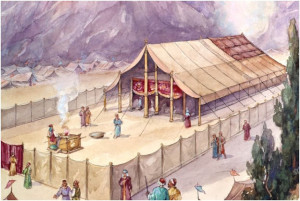 Shoin, in the very first paragraph we asked azoy: Is Hashem mamish truly everywhere? Or, was His essence limited to the Mishkan that He ordered built? Seemingly, He can be everywhere and within everyone but is limited only by those that don’t let Him in. Said the Shelah Hakodesh, he very well known for drafting a certain tifilah (prayer), which if recited on a certain day of the year, will ensure material wealth, azoy: The posik (Shemois 25:8) which states “They shall make a Sanctuary for Me and I will dwell within them” means azoy: The RBSO wants to taka live within each individual. Each person should make himself into a Sanctuary wherein the Divine Presence can rest. Meaning a space reserved within himself, for the RBSO. Exactly how one does that is not clear, ober one thing is quite zicher: One cannot make himself into a sanctuary by selling dedications and sponsorships. Nor can one do this by constantly being motivated and stimulated, if you chap.
Shoin, in the very first paragraph we asked azoy: Is Hashem mamish truly everywhere? Or, was His essence limited to the Mishkan that He ordered built? Seemingly, He can be everywhere and within everyone but is limited only by those that don’t let Him in. Said the Shelah Hakodesh, he very well known for drafting a certain tifilah (prayer), which if recited on a certain day of the year, will ensure material wealth, azoy: The posik (Shemois 25:8) which states “They shall make a Sanctuary for Me and I will dwell within them” means azoy: The RBSO wants to taka live within each individual. Each person should make himself into a Sanctuary wherein the Divine Presence can rest. Meaning a space reserved within himself, for the RBSO. Exactly how one does that is not clear, ober one thing is quite zicher: One cannot make himself into a sanctuary by selling dedications and sponsorships. Nor can one do this by constantly being motivated and stimulated, if you chap.
And said Rabbi Avrahom Twerski so gishmak azoy. A recovered alcoholic said: “When I stopped drinking, I felt a terrible void within me. That was the space where God belonged. How foolish of me to have tried fill that space with alcohol.” Those who drink can zicher relate. Those who don’t mistama know that there is more than one way to fill that space that belongs to the RBSO. If the space is fully occupied, there is no room for the RBSO; He is blocked out.
A gittin Shabbis –
The Oisvorfer Ruv
Yitz Grossman
